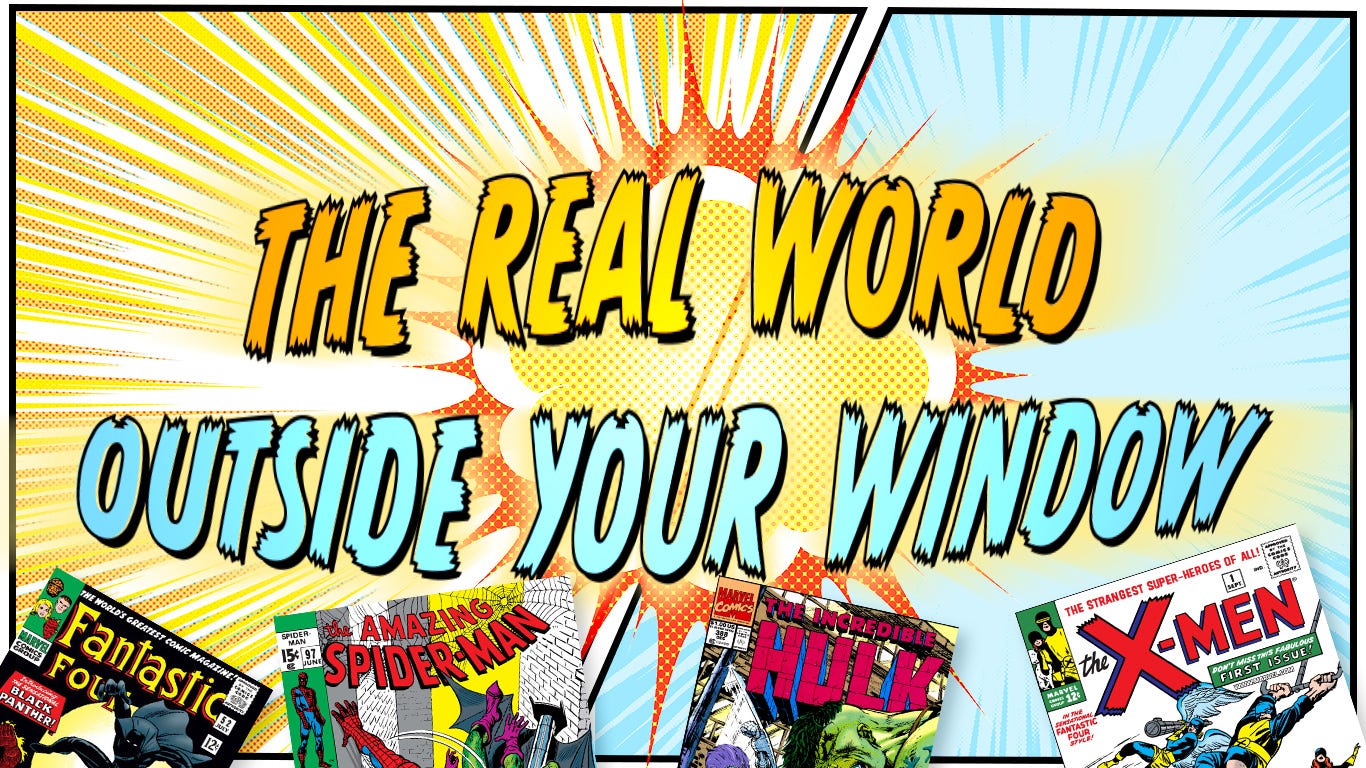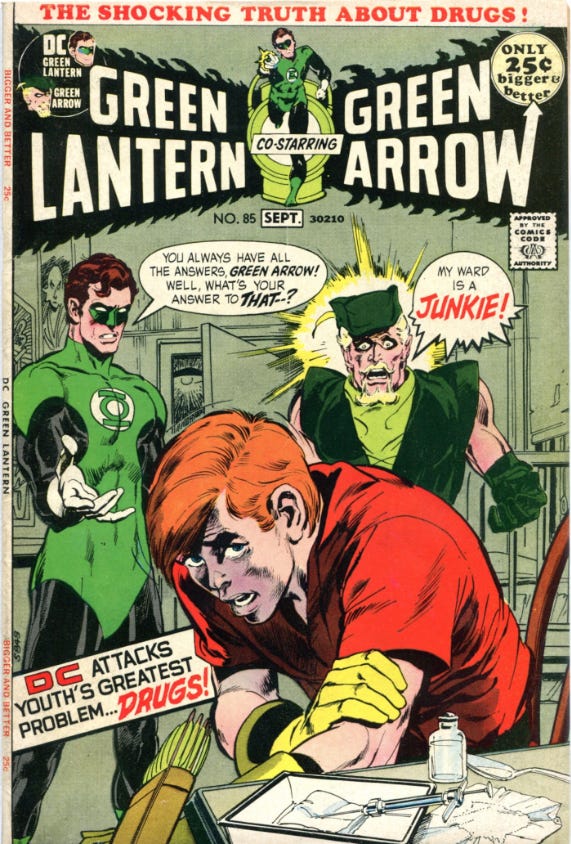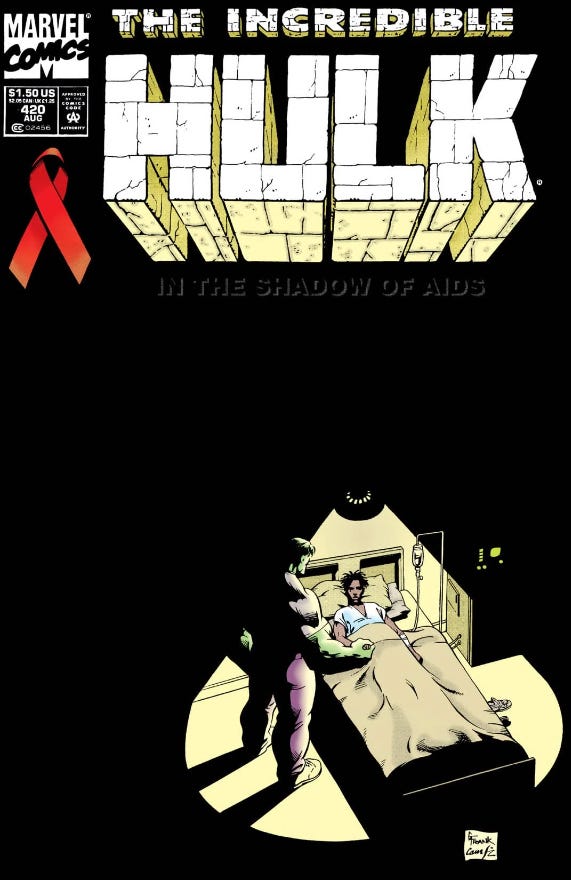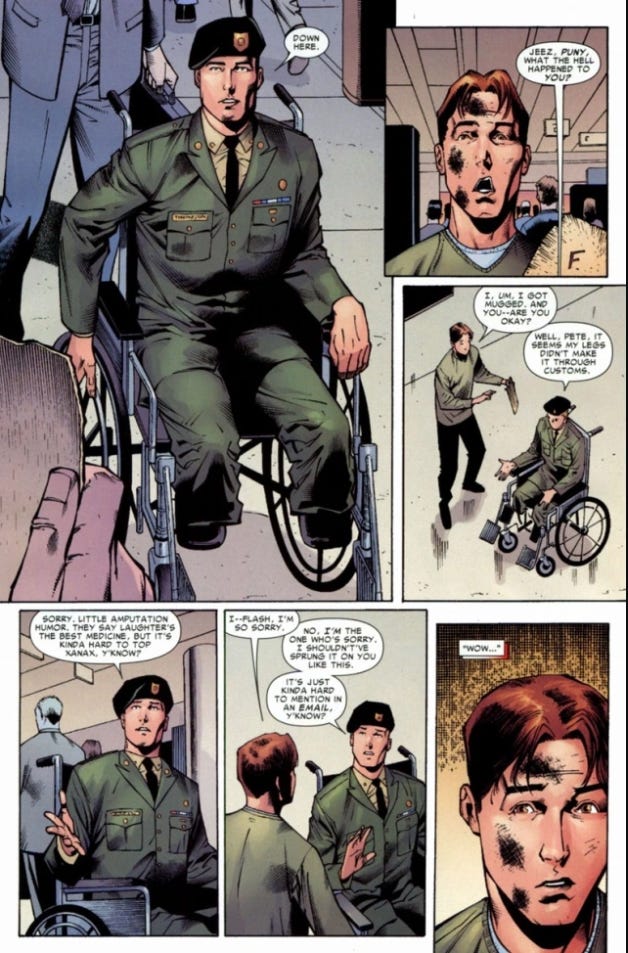The Real World Outside Your Window
What happens when comic books stop being fantasy and start getting real?
By Kevin Decent
Comic books have always attracted a fan base that feels alone. The geeks, the nerds, the outcasts, the mutants, the freaks, and more. Thankfully, creators are aware of this fan base and have used their platform to speak directly to these fans who may have nowhere else to turn. Whether bullied, alone, depressed, or desperate the message is the same: you are not alone, and the ability to rise above resides within us all. Let’s take a look at what happens when comics stop being fantasy, and start getting real.
A Society of Fear
One of the best and well-known examples of this is Stan Lee using the X-Men as an examination of the racial tensions throughout the United States in the 1960s. From their self-titled debut in 1963 to more recent releases, the X-Men and their fellow mutants have experienced their own version of the Civil Rights movement within the Marvel Universe. Professor X was cast in the Martin Luther King, Jr. role while Magneto provided the alternate Malcom X-like viewpoint. One side is clearly focused on protecting a society that fears and shuns them, while their counterpart will grasp respect and equality through any means necessary.
Stan Lee and Jack Kirby also went on to introduce the Black Panther in the 1966 publication of Fantastic Four #52. Black Panther is the first superhero of African descent in a major American comic book, nearly 30 years after the debut of Superman. While heroes like the X-Men and Black Panther can solve world-spanning problems in one issue, real progress takes decades and comics will continue to shine a light on more of society’s problems.
A War on Drugs
In the 1970s the United States Department of Health, Education, and Welfare had a revolutionary idea. The Department recognized the influence of comic books on kids and at their request, Stan Lee crafted a three-part story in Amazing Spider-Man #96-98 (1971). In this story, Peter Parker’s best friend, Harry Osborn, turns to drugs after a bad break up. Harry overdoses but thankfully his best friend finds him just in time to rush to the hospital and save his life. While Stan Lee never identified the drugs, the message still stands tall 50 years later. Ironically, the Comics Code Authority told Marvel that this comic could not be published with the CCA seal because of the included drug references. Despite the anti-drug messaging and the request of the United States government, the CCA continued to refuse the seal. Stan stood behind his work and the good he believed it would do and moved forward, publishing all three issues without the seal.
DC Comics followed Marvel’s example and went a step further. In the iconic Green Lantern/Green Arrow issues 85 and 86 (1971), Green Arrow discovers that his teenage sidekick, Roy “Speedy” Harper is a heroin addict. The two hard-travelling heroes think they see Harper among a group of muggers they are chasing and both assume he’s acting undercover— until Green Arrow witnesses his ward shooting up. Arrow lashes out with such anger, Speedy is able to quit cold turkey. Thanks to the previous CCA seal issues with the Spider-Man story, representatives from Marvel and DC met up to rewrite the Comics Code to allow anti-drug stories.
A Different Kind of Positivity
As comics became more respected in later decades, new societal issues emerged for them to address. During the early years of the AIDS pandemic, confusion and misinformation abounded, but many lacked a connection to understand this new virus. Peter David reintroduced a forgotten friend of the Hulk specifically to explore this topic for readers. In Incredible Hulk #388 , the Hulk’s usual sidekick, Rick Jones, meets up with Jim Wilson who hadn’t been seen in the comics for over two hundred issues. Rick is playing a charity concert for an HIV/AIDS clinic that Wilson works for. During their catching up, Jim reveals to Rick that he is also HIV-positive. Later in the issue Rick has a moment of hesitation helping Jim after the villain Speedfreak has cut Wilson open.
Three years later in Incredible Hulk , Wilson is dying and asking for the Hulk to attempt to save his life with a blood transfusion. Meanwhile, Betty Banner receives a call while working at a suicide prevention hotline from a young man who is considering taking his own life due to being HIV-positive. Betty talks to the man about what HIV/AIDS is and the truths about the disease, all of which works to educate the reader. Unfortunately, one of the realities at the time of publication was that there is no cure or healing cocktail yet. Even the Hulk himself declined giving his own blood to Jim out of fear that such an experimental idea might only make the disease worse. In the letters page at the end of issue #420, other comic book creators shared their own stories of how HIV/AIDS had affected their lives. The most powerful hero in the Marvel Universe used his platform to bring attention, information, and a voice to a topic that was being spoken about in whispers.
A Wounded Warrior
Our final hero to discuss has lost much due to the twenty-year-old “War on Terror” yet continues to battle on like his idol. Flash Thompson is best known as Peter Parker’s bully from the early years of Spider-Man. Over time he became Peter’s biggest high school nemesis but also, ironically, Spider-Man’s biggest fan. Flash began to live his life as he believed his idol would, which led to a close friendship with Peter and forcing himself into many team-ups and battles. After the real world and Marvel Universe events of 9/11, Flash rejoins the army under the logic that that is what Spider-Man would do. Flash’s platoon is attacked and he risks his life to save his fellow soldiers because Spider-Man had sacrificed himself so many times.
The injuries he receives in battle result in Thompson’s legs being amputated below the knees. However, through the healing process and adjusting to his new life, he continues to use Spider-Man as his primary motivation, winning paraplegic events at the local YMCA and joining the mayor’s office of veteran affairs. At one point, Flash was bonded with a Venom symbiote which acted as his legs, but later he received prosthetics as part of Venom: Space Knight #3, a Marvel comic created in consultation with the Wounded Warrior Project. There are many men and women that served in our armed forces who, much like Flash, found inspiration in fictional characters and became inspiring heroes themselves.
Thanks to these groundbreaking titles, comics continue to address societal issues such as mental health, domestic violence, gun violence, drug use, and others. Comic books are more easily available to readers of all ages than ever before which results in more opportunities for these titles to land in the hands of readers who need these stories the most.
[Editor’s note: This article originally appeared in Vol 1. Issue #4 of Retrofied Magazine. Purchase your copy of the print edition today!]








Really great article.